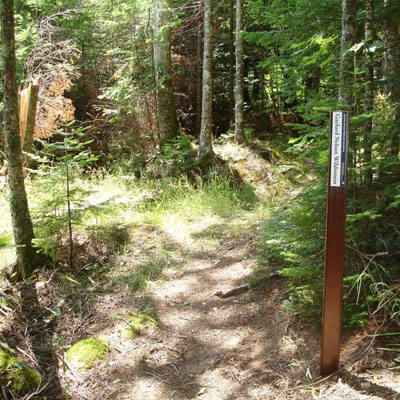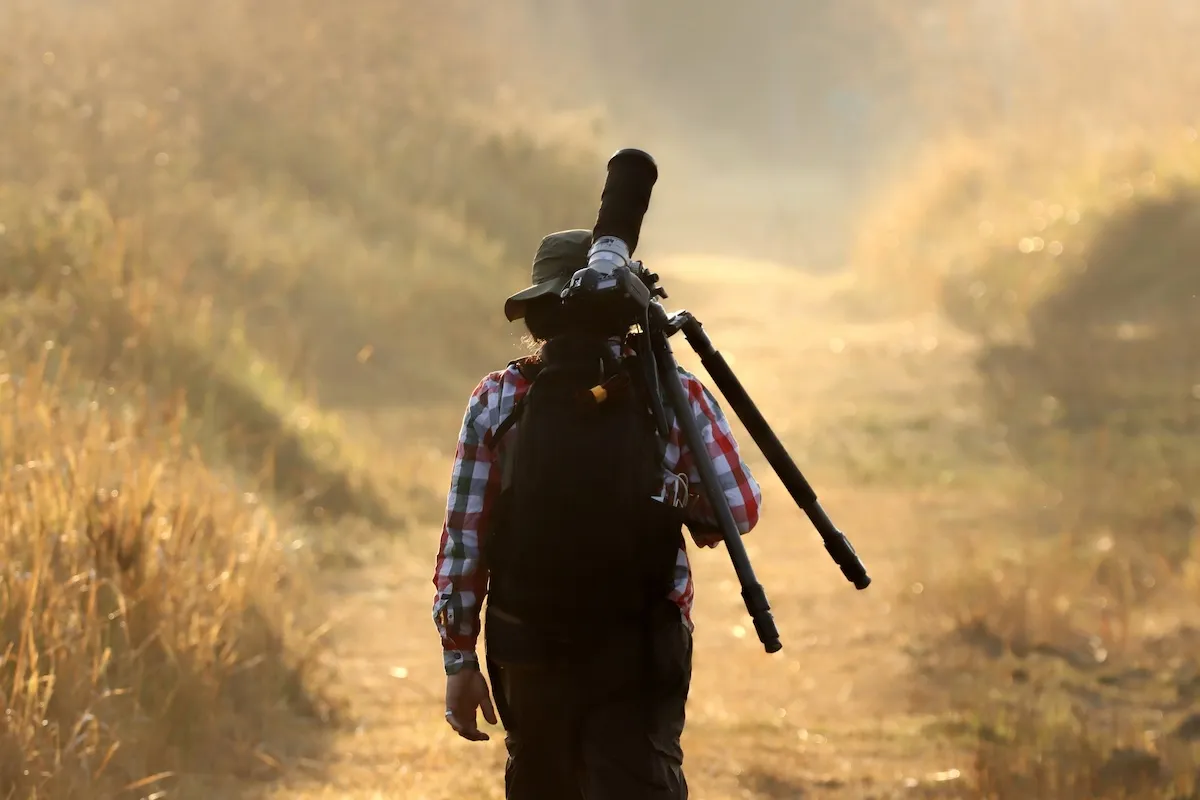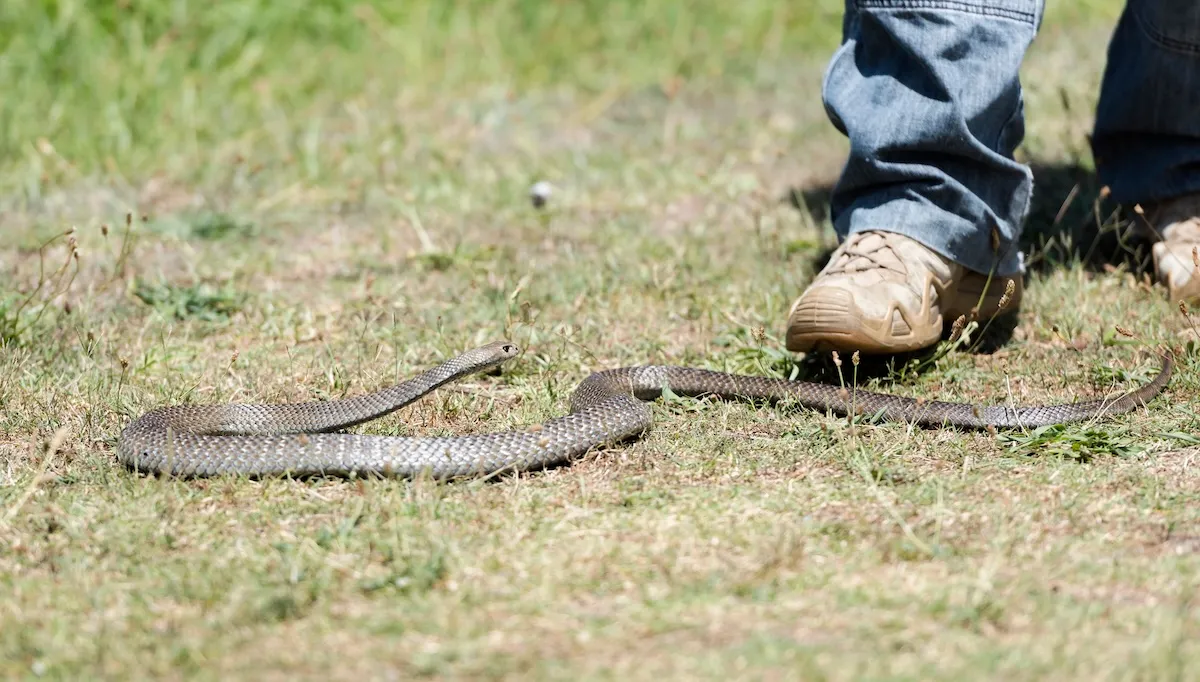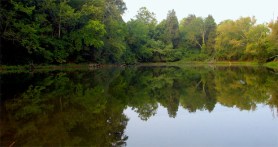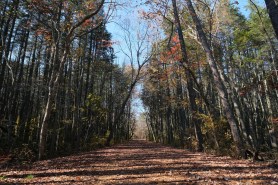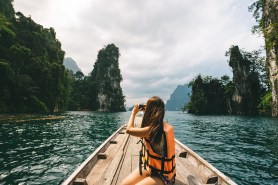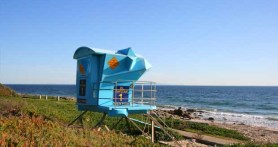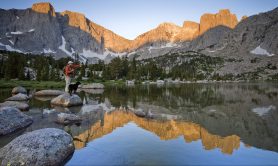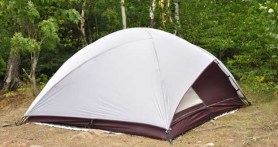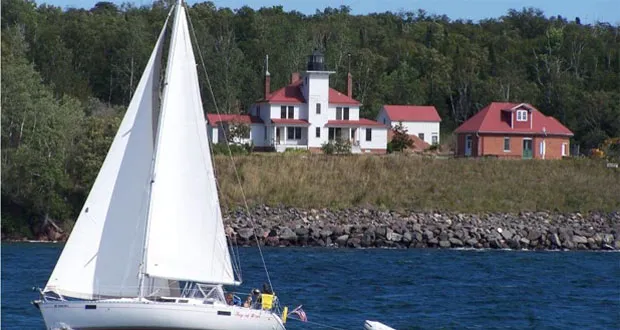

Apostle Islands National Lakeshore in Wisconsin
Videos by Outdoors
Camp Wisconsin: I’m talking with Neal today. He’s the Assistant Chief of Interpretation and Education at Apostle Island National Lakeshore in Wisconsin. Neal, why don’t you start with giving us just a little bit of history on the Islands there and how they came to be and maybe even when they came to be a National Park?
Neal: Certainly. The Park dates back to 1970, but the first efforts that turned the area into a National Park date back to the late 1920s. As the logging period was coming to an end and people were worried about the loss of jobs in the area, they were thinking that tourism might take the place of the jobs being lost. The timber industry was moving on and fishing was in somewhat of decline. But the Islands had basically been not quite clear cut, but logged quite heavily. And when the person from the National Park Service came to do the initial study, his report was that well, the area didn’t meet National Park standards and that someday it might make a nice State Park.
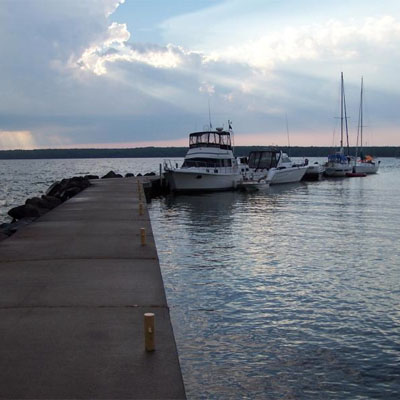
But only thirty years late the effort was picked up by Wisconsin Senator, Gaylord Nelson, who was a strong proponent of conservation and preservation of habitat. And he convinced President Kennedy to make a trip to the area in 1963 in order to move the process forward. And the culmination of those efforts was done in 1970. The legislation was passed, establishing the Apostle Island National Lakeshore.
Camp Wisconsin: Very interesting history. Now, I’ve spent some time in that area. I haven’t camped out on the Islands. I’ve done a fair amount of camping and I like to talk about the Parks from maybe someone who hasn’t been there or from sort of a first time camper to that area. So, could you tell us a little bit about what’s different about camping in the Apostle Islands versus throwing the gear in the back of my car and driving up to a campsite in a State Park?
Neal: Sure. Well, the main difference is that all but one of the campsites are located on Islands, and none of those Islands are available by car. There are no roads on any of the Islands in the National Lakeshore. So, any camping that you do in the Park is going to require that you get to the campsite by some kind of a boat, whether that’s a powerboat or a sailboat or a sea kayak, or the cruise boat that makes regular stop on a few of the Islands in the summertime. So, it requires a little bit of a change of point of view when thinking in terms of camping. You’re going to have to carry everything that you need to camp out to the Islands in your boat.
Camp Wisconsin: Okay. So, I could take my own boat out to one of the campsites is what you’re saying.
Neal: That’s correct. Yeah, there are public docks on 13 of the Islands. All in all there are 21 Islands in the National Lakeshore. And people will tie up to those docks overnight or, quite often, larger sailboats and powerboats will anchor offshore and people will bring you in to shore. Or if you have a small boat, 16, 18, or 20-foot powerboat, you can beat your boat in various locations, and then of course sea kayaks. Anywhere there’s a stretch of sand you’d be able to land a sea kayak. And most all of the camping that happens in the Park is right along the shore of the lake. Very few people. We don’t have any of the campsites that are set back in the middle of the Island because everybody wants to have that lake view. Everybody wants to have a beach nearby, and you also want to have a source of water.
Camp Wisconsin: Yeah. Yeah. Now, what is the bottom of the lake in and around those Islands in terms of rocks and that kind of thing? Is that something that you need to worry about and kind of go slow and have someone up front on the bow, looking, or is it pretty much okay up into the Island if I’m driving around in that area?
Neal: Well, the Apostle Islands do have light stations that aid the navigation on six of the Islands in order to guide the large boats around the area. But really remarkably, the Islands create a tremendous safe haven for boating activity. There are a few places where there are shallow areas that you need to be careful, but they’re clearly marked on lake charts and by navigational aids. And so, in most instances, there are lovely stretches of beautiful sand beach. As you’re approaching the shorelines, you’re getting right up to the edge of the Island; sometimes you’ve got a nice sand beach with the bottom that’s a sandy bay, where the bottom is sandy well out into the lake. But in other places, there’s cobble beaches or rocks just under the surface.
So, if you’re landing a boat or beaching a boat, you need to exercise a lot of caution and get somebody up front to take a look and see what the bottom of the lake actually looks like.
Camp Wisconsin: Sure.
Neal: And in the case of Lake Superior here that’s usually not a problem because the clarity of the water is so remarkable.
Camp Wisconsin: Yeah, absolutely. How common is it for someone to be out there, camping, and have the lake just be too choppy for them to leave on the date that they wanted to leave? Is that a very common occurrence?
Neal: Yes. The way we setup camping at the Park is we require that everyone who camps at the Park have to have a camping permit. Your camping permit acts a reservation for specific sites on specific nights. So, whereas some people may want to go out to a particular Island and spend three or four nights just in that one spot, other people will want to move around and camp on a different Island every night. And what we ask people to do is to work up an itinerary. Under the best circumstances, where do you want to be every night? And we will issue that camping permit, reserving those specific campsites, because you don’t want to go 15 or 20 miles to get a campsite only to find that somebody else has already taken it.
Camp Wisconsin: Exactly.
Neal: But the weather – we have a saying here that the lake is the boss. And when the wind picks up and the waves get big, we don’t want people to go out and get into any trouble. And safety is always the first consideration. And so, if you get weathered in some place, that’s not a problem. What we do ask is basically if the weather is bad for you, it’s bad for everybody. So, chances are, if you can’t go anywhere, nobody else is moving around much either.
Camp Wisconsin: Right. Right.
Neal: Not always the case, but it’s pretty often that it’s the case. And there is some limited cellphone coverage in the Apostle Islands. We do have several Islands where we have Park staff stationed there in the summertime, and so if you’re stuck somewhere where you can contact a ranger or one of our volunteers, or if your cellphone is working, we ask that the campers would give the Park a call so we can make changes to your itinerary. Any itinerary changes that are required because of the weather, there’s no additional fee for changing the camping permit.
Camp Wisconsin: Okay. And what is the fee for staying a night?
Neal: For our individual campsites, which are for up to seven people in a party, those are ten dollars a night.
Camp Wisconsin: Okay.
Neal: Not ten dollars per person, but ten dollars for the party.
Camp Wisconsin: Oh, very affordable.
Neal: For our group camping, we have eight group campsites in the Park, and those are for parties of eight to 21 people. And that cost there is twenty dollars a night. Again, not twenty dollars per person, but twenty dollars for the campsite.
Camp Wisconsin: Very reasonable. Yeah. One last question for you. If you were going to go out there and camp for the weekend, Neal, which Island and which site would you stay at? What’s your favorite out there?
Neal: Well, if I were going to take my family camping in the Apostle Islands, I would go out to Stockton Island. Stockton Island is the largest Island in the Park. It’s over ten thousand acres in size. It has the most trails of any of the Islands. It’s got about 15 miles of hiking trails.
Camp Wisconsin: Wow.
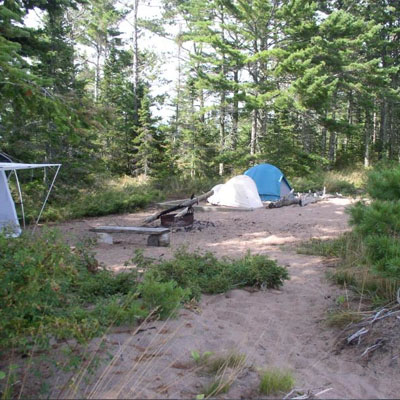
The sands are of a quality and composition that when you walk on them they squeak, or sing, and so it’s one of the Hallmark characteristics of the Apostle Islands are the singing sands of Julian Bay. But it’s a great place to swim. It’s a great place to walk on the beach. A great place to bird watch. There are all kinds of bird species that nest on the Island or use it as a rest stop during migration. There are incredible blueberries in the summertime. There are also bears on Stockton Island, so we do have bear-proof food storage lockers in each of the campsites to help people to not encourage bears to hang around the campsites.
Camp Wisconsin: Sure. Sure.
Neal: But yeah, it’s a great place to go and spend a few days with your family.
Camp Wisconsin: Perfect. So, Stockton is your go-to.
Neal: You bet.
Camp Wisconsin: Well, thank you so much, Neal, for taking some time out of your day to chat with us and to tell us more about Apostle Island National Lakeshore in Wisconsin.
Neal: Happy to do it. And just one other thing about making your reservations. For the individual campsites, we only take reservations beginning one month before the start of a trip. So, if you’re wanting to camp on the first of August, the earliest that you can call us to make the reservation is the first of July.
Camp Wisconsin: Okay, perfect. We’ll keep that in mind.
Neal: Great.
Camp Wisconsin: All right, thanks again.
Neal: You’re welcome. Nice talking to you.
